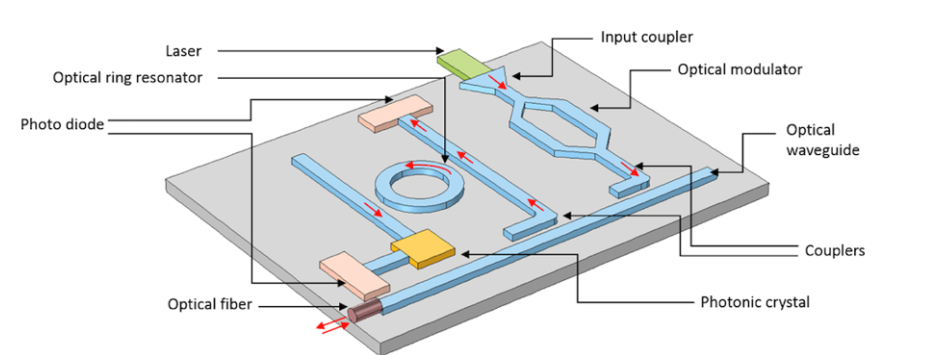Silicon photonic data communication technology
In several categories of photonic devices, silicon photonic components are competitive with best-in-class devices, which are discussed below. Perhaps what we consider to be the most transformative work in optical communications is the creation of integrated platforms that integrate modulators, detectors, waveguides, and other components on the same chip that communicate with each other. In some cases, transistors are also included in these platforms, allowing the amplifier, serialization, and feedback to all be integrated on the same chip. Due to the cost of developing such processes, this effort is primarily aimed at applications for peer-to-peer data communication. And because of the cost of developing a transistor manufacturing process, the emerging consensus in the field is that, from a performance and cost perspective, it makes the most sense for the foreseeable future to integrate electronic devices by doing bonding technology at the wafer or chip level.
There is obvious value in being able to make chips that can compute using electronic devices and carry out optical communication. Most of the early applications of silicon photonics were in digital data communications. This is driven by fundamental physical differences between electrons (fermions) and photons (bosons). Electrons are great for computing because the two of them cannot be in the same place at the same time. This means that they interact strongly with each other. Therefore, it is possible to use electrons to build large-scale nonlinear switching devices – transistors.
Photons have different properties: many photons can be in the same place at the same time, and under very special circumstances they don’t interfere with each other. That’s why it’s possible to transmit trillions of bits of data per second through a single fiber: it’s not done by creating a data stream with a single terabit bandwidth.
In many parts of the world, fiber to the home is the dominant access paradigm, although this has not been proven to be true in the United States, where it competes with DSL and other technologies. With the constant demand for bandwidth, the need to drive more and more efficient transmission of data through fiber optics is also growing steadily. The broad trend in the data communication market is that as the distance decreases, the price of each segment decreases dramatically while the volume increases. Not surprisingly, silicon photonics commercialization efforts have focused a significant amount of work on high-volume, short-range applications, targeting data centers and high-performance computing. Future applications will include board-to-board, USB-scale short-range connectivity, and perhaps even CPU core-to-core communication eventually, although what will happen with core-to-core applications on a chip is still fairly speculative. Although it has not yet reached the scale of the CMOS industry, silicon photonics has begun to become a significant industry.

Post time: Jul-09-2024





